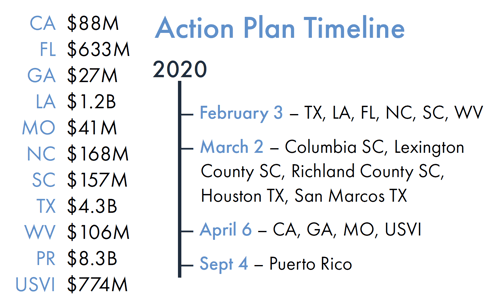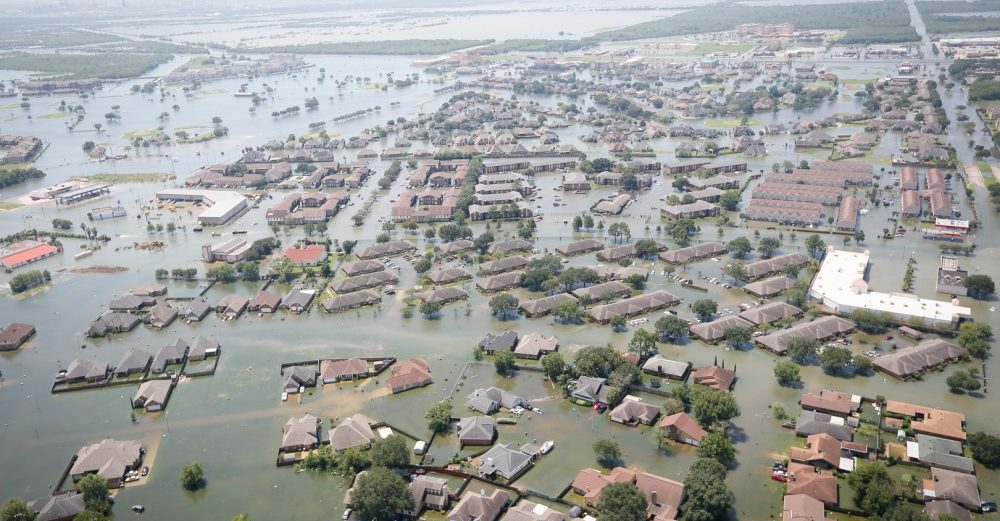HUD CDBG-MIT Program
Ardurra has managed billions of dollars in federal and state assistance funds to furnish full spectrum mitigation, preparedness, response and recovery services. We remain fully engaged and informed regarding agency funding mechanisms and associated regulations to afford our clients the most up to date resources and information available.
CDBG-MIT Overview
The Office of Housing and Urban Development (HUD), through the Federal Register/Vol. 84, No. 169, announced funding availability by the Further Additional Supplemental Appropriations for Disaster Relief Requirements Act 2018. This initial notice allocated $6.875B in Community Development Block Grant Mitigation (CDBG-MIT) funds to be utilized by grantees recovering from disasters that occurred in 2015, 2016 and 2017. An additional Federal Register Notice/Vol. 85, No.17 dated January 27, 2020 allocated $8.285B CDBG-MIT funds to the Commonwealth of Puerto Rico.
To date, 16 grantees including cities, counties, states and territories are eligible to receive CDBG-MIT funding. Grantees were assigned deadlines and are required to follow the CDBG Action Plan process. This process informs the public on the manner in which the funds will be expended and outlines the program parameters. One unique difference is the inclusion of a mitigation needs assessment of the most impacted and distressed areas.
Allocations & Timeline

Highlights
- Low and Moderate Income (LMI) – grantees must ensure at least 50% LMI beneficiaries are served with CDBG-MIT funds
- HUD Identified Most Impacted and Distressed (MID) – grantees are required to spend at least50% of their allocation in HUD identified MIDs; state identified MIDs can constitute the rest of the funding. CDBG-MIT must benefit residents in either HUD or state-identified MIDs
- Timeline – grantee must expend 50% of CDBG-MIT funds within 6 years of execution of grant agreement and 100% within 12 years
Critical First Steps
1. Identify eligible project(s)
2. Identify grantee’s LMI target areas within HUD and State MIDs
3. Review capacity and decide whether to self-administer or hire a consultant
a. RFP required for grant administrator
b. RFQ required for design engineer
c. Consider having consultant properly procured before the application process begins to prevent potential conflicts and disallowed costs
4. Conduct public hearings to discuss specific projects before developing application
5. Produce application and wait for approval
Eligible Activities
- Stormwater management system rehabilitation
- Infrastructure improvements (water, sewer, streets, bridges, debris removal, generators, etc.), natural or green infrastructure, communications infrastructure
- Public facilities
- Buyouts or acquisitions – with or without relocation assistance, down payment assistance, housing incentives, demolition
- Housing incentives
- Relocation activities – move families out of floodplain
- Public service within 15% cap (housing counseling, legal counseling, job training, mental health, general health services)
- FEMA Hazard Mitigation Grant Program (HMGP) cost share for CDBG-MIT eligible project
- Economic development (assistance to businesses for the installation of disaster mitigation improvements and technologies, financing to support the development of technologies, systems and other measures to mitigate future disaster impacts)
- Hardening commercial areas and facilities and financing critical infrastructure sectors to allow continued commercial operations during and after disasters; non-residential structures must be elevated or flood-proofed
Ineligible Activities
- Emergency response services
- Enlarging dams or levees
- Assisting privately-owned utility
- Buildings/ facilities used for general conduct of government (city halls, courthouses, etc.)
- Reimbursement for activities completed prior to Federal Register Notice
Non-competitive contracts need to meet certain 2CFR requirements. Some of these requirements include required contract clauses bonding when buying property or services above a certain dollar value, hiring responsible and capable contractors, demonstration of reasonable costs above a certain value. Cost and markups without a "not to exceed" are prohibited. Reasonable time and materials, contracts with cost ceilings, and conflicts of interest must be considered as potential limiting factors.




